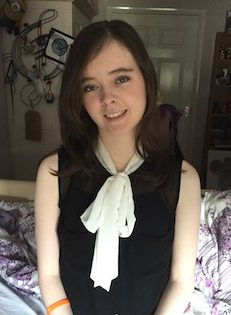When Jessica Taylor-Bearman was just 15, an ordinary virus turned into ME or Chronic Fatigue Syndrome. But being permanently bedridden for a decade didn’t stop her getting married and writing a book
In 2006, I was doing my GCSEs, leading an energetic busy life. Then, one day, after contracting what initially seemed like an innocuous virus, my whole life came to an abrupt halt overnight.
I went from being a normal energetic teenager enjoying hanging out friends and partying at all hours, to not even being able to wash my own face.
It was as if my body had a broken battery that wouldn’t charge past ten percent. Even the smallest task became a huge undertaking and when that ten percent battery lost charge, I’d crash spectacularly, unable to even talk coherently. When I would try to speak, only gobbledegook would come out.
The crippling symptoms
One unbearable aspect of M.E. (myalgic encephalomyelitis), also known as chronic fatigue syndrome, is the pain.
A bone crippling fatigue filled every cell in my body every moment, of every second of every day. It hurt to think, to move and to breathe. It was agony, yet pain relief barely even touched the symptoms.
This was no ordinary fatigue, in fact this sheer exhaustion physically hurt me to the point that I was often left twisting and turning in pain.
When I would try to speak, only gobbledegook would come out
To try and keep things as normal as possible for my younger sister, I would try to sit at the table for our evening meal. This became so challenging that I would be left in tears, slumped over the table in a mixture of exhaustion and agony.
My last meal downstairs was pitiful. My mum had mashed the food so it was soft, but I still couldn’t swallow it or even hold my head up enough to feel part of the family meal. My brother had to carry me to my room, as tears fell down my face and I tried but failed to hold my head up.
The second and perhaps most frustrating aspect of this illness, is the incredible level of ignorance I was faced with on an almost daily basis.
M.E. is now recognised as a neuro-immune disease, and yet at that time, 12 years ago, the medical professionals had no idea how to treat me and even tried sending me to a locked ward in mental hospital because M.E. was considered a psychological condition.
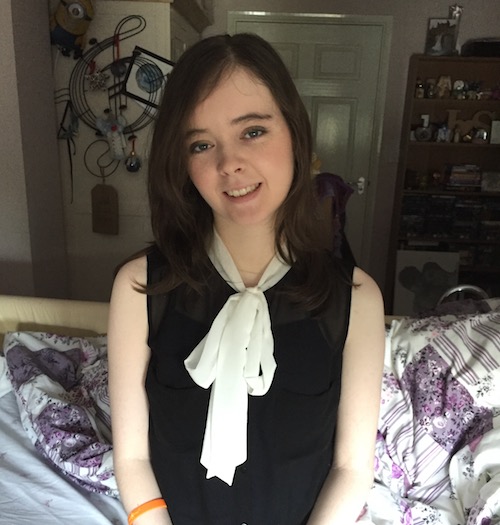
That the doctors could even begin to believe that my symptoms were psychological beggars’ belief, I can barely find the words describe how angry it made me feel.
Even now, despite M.E. being considered a neuro immune disease, it is still thought of as a grey area, which is frustrating.
Thankfully, my parents put up a fight and instead I was sent to a neurologist. By this time, I was unable to move, eat or speak and though I was only 15 school was already distant memory.
The nursing staff were as frustrated as I was, at not being able to understand me. I was simply existing not living, in a perfect prison.
Previously on the children’s ward, I had developed a code of ticks and noises that became my audio diary called ‘Bug’, which became my lifeline. It allowed people to understand that underneath it all I was still compos mentis.
M.E. treatment made it worse
Everything I did was a struggle, from washing my face to walking to the bathroom; soon the latter became a crawl with help.
It wasn’t long before, aged 15, I couldn’t even get out of the bed to move a couple of metres to the toilet.
The hardest part was every time I did anything, I would have post exertional malaise (PEM). All my symptoms would increase greatly, and it could take months if not more to recover.
Even thinking about what I wanted to put into my diary, could stop me from processing anything for weeks due to sheer exhaustion.
To make matters worse, the recommended treatment for M.E. on the NHS is Graded Exercise Therapy (GET) with physical exercises that gradually increases over time and Cognitive Behavioural Therapy (CBT), which was meant to help me manage my symptoms, neither of which helped me.
In fact, the treatment made me significantly worse – all my symptoms from noise and light sensitivity to the agony increased greatly – and has been proven to have the same effect on other sufferers.
It was only in February this year that Parliament finally recommended a change should be made to the guidelines on how M.E. is treated in the UK; it proposed taking in the views of people who are affected, along with their carers’. At the moment we’re still waiting to see what comes of this, as it’s an ongoing issue.
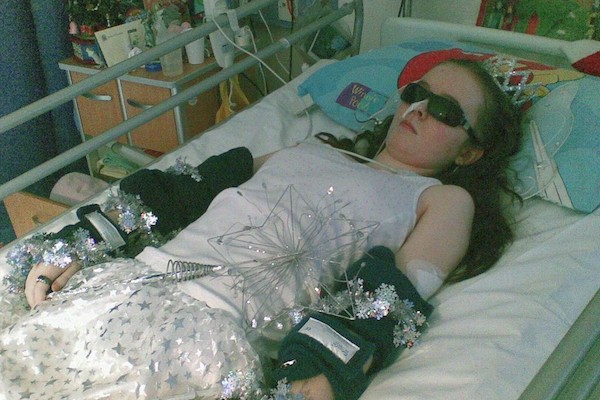
Hiding behind dark glasses
Eventually, by the end of 2006 , at 15, I was admitted to hospital where I was tube fed, inanimate and barely had the energy to swallow a single sip of water.
By then, I’d become ‘allergic’ to light and had noise hypersensitivity, so much so that I had to hide my eyes behind dark glasses and constantly wear ear plugs. A choking blanket of exhaustion was suffocating me. I couldn’t even scratch that itch on the end of my nose, as irritating as it was.
My life became full of options: do I try to press the buzzer to get pain relief or do I ask for a bedpan? It was one or the other because I didn’t have the energy to communicate both.
Initially, I didn’t even have the strength to press the buzzer and relied on a baby monitor system communication with my named nurse.
I required a round the clock care but the ward had many others. This led to me suffering with contracted arms, due to a lack of attention, amongst many other things.
aged 15, I was tube fed, inanimate and barely had the energy to swallow a single sip of water
It wasn’t until I was moved to a new hospital that worked with my body as opposed to against it, at whatever rate I could manage, that I saw any improvement.
When I had a doctor who understood me and knew that I was trying to fight this disease, the difference in care was immeasurable. This hospital didn’t use CBT or GET and used a holistic approach towards treating you.
Slowly but surely, over many years, I started to get some functions back. Four years later, in 2010 at age 19, I returned home. I was still completely bedridden and unable to stand up.
I lived in a world of one room, where my bed was my home. The only time I left that space, was when I was rushed into hospital with many different infections.
A year of firsts
2014 was the year for doing things for the first time since I had been ill. I gave my sister a hug for the first time, went outside in a stretcher just to enjoy the view, and had a ‘special’ bath.
Through hydrotherapy for short periods of time, my body learnt to support itself with gravity. This was the only safe way to gain any muscle that I desperately needed, while protecting my bones, as by now I’d also developed osteoporosis.
I went to a specialist hospital, where I learnt to sit-up again. Whilst this happened, adaptions were made to my house, so I would no longer be stuck in a world of one room. Instead, I would be able to join in with my family.
But even after this momentous achievement I was still in and out of hospital with various infections or seizures.
There was another big occasion that I wanted to be ready for: my brother’s wedding. I had jokingly said he couldn’t get married without me being there and he took me seriously.
It took everything for me to get me into a wheelchair that reclined. At first, I could only sit in it for a couple of seconds but it was built up over time. I managed to get to my brother’s wedding and watch him get married. I then laid in hospital for the next two weeks – that was the price I paid.
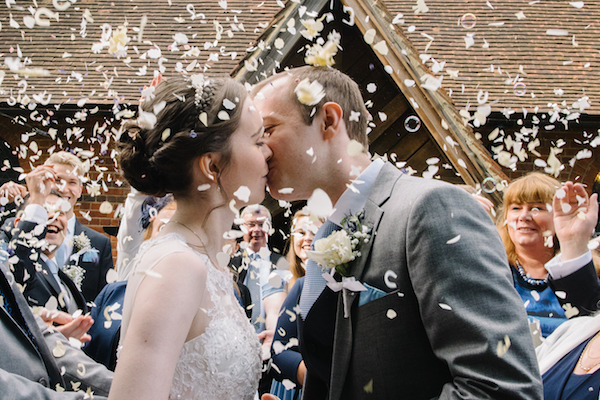
Falling in love
But my brother wasn’t the only one who’d fallen in love. I had met a man, through a friend, who understood my disease and who saw me for who I was, not for the disease I suffered.
After spending time being very sick in hospital, I had concluded that I didn’t want to just spend life waiting until I was better.
Life was too short. We decided to get married on 29th April 2017. The wedding was in a very small church, I wore a wedding dress and managed to walk down the aisle, but I relied on a wheelchair for everything else.
It felt like a miracle but had taken so many years of hard work and fighting with my body. After the wedding, I was in excruciating pain, but the memories made on that day will last a lifetime.
Writing a book
Fast forward to 2018 and I am still suffering with severe M.E. I spend twenty-two hours a day bed bound, rather than the whole day, which is an improvement.
I have now got a special reclining power wheelchair, which has completely changed my world. It has given me back some independence that had been lost since I had become unwell because it enables me to go out into the garden.
I spend twenty-two hours a day bed bound, rather than the whole day, which is an improvement
I am determined not to lose any more years to this disease, so I do things to distract me from the agony I face on a minute to minute basis.
I’ve learnt to paint, using the involuntary movements that happen when I laugh, to move a paintbrush balanced in my hand, and I turned my diary entries into a book called ‘A Girl Behind Dark Glasses’ – using voice activated technology and an iPod touch to write down what had happened.
I am hugely proud of this achievement and hope it inspires others fighting this illness and helps people understand the severity that this disease and the devastating impact it can have.
If you have been affected by the content in this story, find out more at actionforme.org.uk
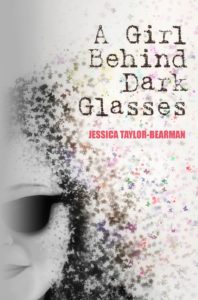
Related Healthista content:
Tired all the time? These 11 energy foods will help
The anaemic epidemic – is iron deficiency making you tired all the time?
Healthista Event: Wellness trends 2019 (click here to find out more)
Like this article? Sign up to our newsletter to get more articles like this delivered straight to your inbox.




